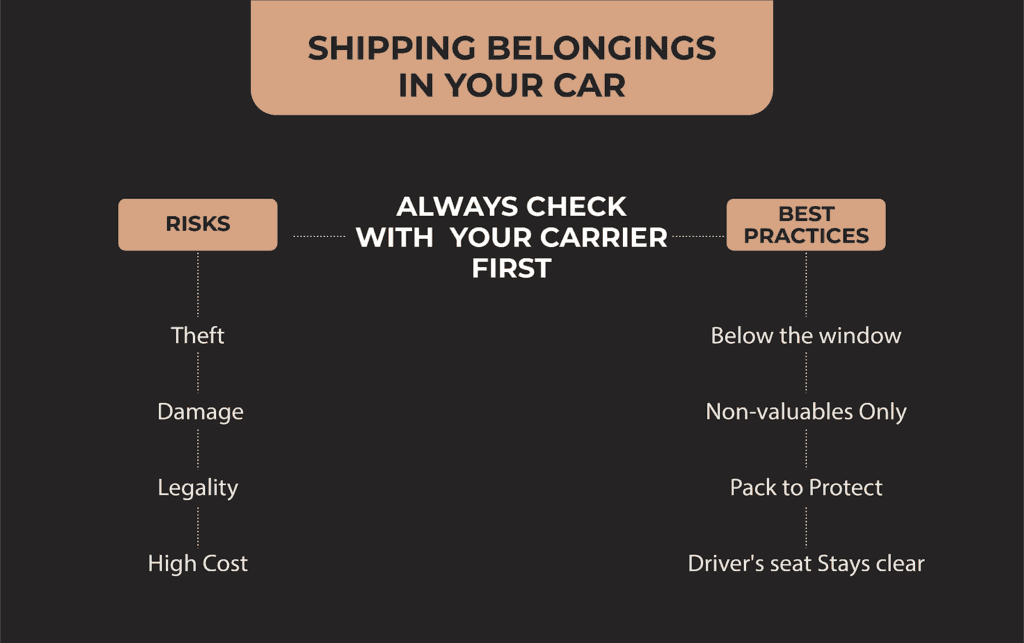
Car Shipping
Required Documents To Ship Your Car Between Canada & US | How to Ship a Car | ShipLux
Shipping a car is a hassle no matter what. Whether you’re moving and need your car for the next part of your journey, heading to a carshow and want to ensure your car arrives in pristine condition, or relocating some of your classics, going through the process of having your car shipped can be a pain. Now add border-crossing to the equation, and suddenly it’s a lot more complicated.
Getting the necessary documents in order, letting the proper people know a vehicle will be crossing the border, paying fees, passing regulations, meeting requirements, etc. It’s a mess. Nobody enjoys it, but sometimes you have to go through the trouble.
The final step after gathering all the required paperwork and making sure your car is admissible across the border is to actually get the car across. This is where a shipping company can help out. A business like ShipLux will take all the question marks out of the shipping process - to the point where you could stop reading now and not even worry about how it’s done. Just request a quote and let ShipLux make your life easier.
Exporting: Shipping Your Car To Canada
If you are going to undertake the challenge of shipping your car from the US to Canada with all the organizations you need to contact, organization will be key.
The all-important step one is making sure that your car is on the Registrar of Imported Vehicles (RIV). Transport Canada has a list of cars they allow. If your car isn’t on that list, you can’t ship it. To be honest, the list sounds a lot more intimidating than it is. Your car will probably be on it.
If your car is at least 15 years old, don’t worry about the list—it’s admissible. So, all of you with a classic car you need to ship to Canada, you’re all set.
The vehicle’s title is next. It’s pretty straightforward, but you’ll have a real tough time getting your vehicle across the border if you can’t prove it’s yours. Note: your car cannot have a salvage or rebuilt title; it will not be let in. If you’re confused about your car’s title, or what exactly this means, call or see this page from the U.S. Department of Motor Vehicles to learn more about vehicle titles.
Now, this is where it really gets tedious. You need to get an Internal Transit Number (ITN) which requires you to file in the Automated Export System (AES). I’d wager those reading this are not licensed importers, which means you’ll have to pay a licensed importer for one. A quick Google search will give you tons of businesses that offer this service.
That ITN as well as a scan of the front and back of your title needs to be sent to the. Not every U.S. border crossing has an export office, so you’ll have to call around and ask. It’s highly advisable to have the border crossing explain where the export office is.
If you forget, you’ll have decent luck if you head towards the building surrounded by 18-wheelers, but it’s better if you just call and have them explain. Make sure to bring the ITN, car title, the bill of sale, manufacturer’s statement of compliance (it should be on the vehicle), and have the EPA label affixed to the vehicle . You probably already have the EPA label, but just look at your engine to double check.
Importing a car to Canada requires you to export it from the U.S. first. All the aforementioned steps are a part of the export process. To import, just let the Canadian customs gate know you’re importing a car and they’ll give you further instructions to pay their import tax. That’s it. You have 45 days to register the car and get a license plate for it, but other than that, you’re good.
Importing: Shipping Your Car From Canada
Surprisingly, it’s much easier to import a car to the U.S. There isn’t nearly as much red tape. You’ll need to fill out the DOT Form HS-7 and the EPA Form 3520-1 as well as make sure your vehicle conforms to the EPA’s emission standards requirements.
Check with your state of residence to see what their specific rules are in regards to using a Canadian driver’s license, but you may need to apply for a U.S. license or I.D. card.
One of the most important differences between importing a car into the U.S. vs. into Canada is you need to arrange to get U.S. auto insurance before entering the U.S. If you’re a Canadian and not familiar with the U.S. auto insurance system, one piece of advice would be to talk to a lot of insurance companies and find the best option for you. It’s a very competitive market, so do your research and find the best fit for you.
Then, just like shipping a car to Canada, you’ll need to get your car registered. Bring all the forms and documents you needed at the border, plus anything you think you might need. Here, in the U.S., we love our paperwork and red tape, so better to be over-prepared than under.
Other International Shipping
Obviously, you can’t internationally ship your car yourself, so this comes down to finding the right shipping company to work with. They’ll handle the shipping, but you’ll need to make sure you’re ready to cover all the fees associated with international shipping. Customs duty, processing fees, sales tax, destination charges, etc. Request a quote from your shipping company, but leave a little extra room for unforeseen fees.
Alaska and Hawaii will require a shipping company to transport your car to a mainland port first. Then, it’ll take the journey to the more remote ports of Alaska and Hawaii. Again, like for any vehicle shipping needs, shop around and request a few quotes to get the best pricing and timing for you.
Is International Shipping the Right Choice For You?
Unless you were nodding along in understanding at all the documents you’d need to gather, don’t bother yourself with international car shipping and hire a company to do it for you. I would understand an argument for just driving your car yourself cross country if you were moving, or if you need to save the extra cash. But for international car shipping, there’s too much red tape you need to follow to make it worth your time. Save yourself the headache.
Have an established budget for shipping your car to/from Canada; request a few quotes and see if they’re within your range—seriously consider spending a little extra money—and then let a shipping company handle it. Is it impossible to do it all yourself? Not at all, but you will not have an enjoyable time. Just spend the extra money and have your vehicle show up where you want it when you want it.
Recent post

General Shipping Information
A Step-By-Step Guide On Relocating ...
...

Car Shipping
A Comprehensive Guide on How to Shi...
...
